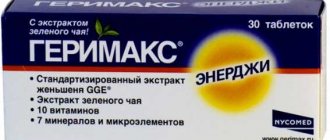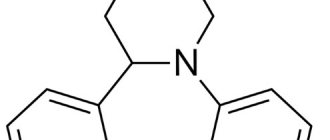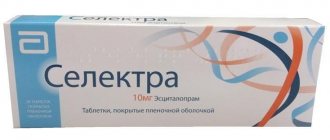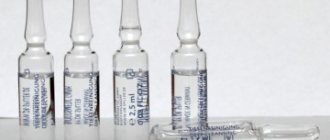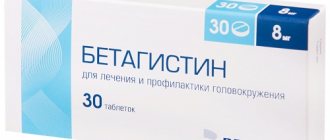Brief information about the medicine
Release form
The drug is produced in the form of tablets intended for oral administration. These are flat, round, white tablets. On one side there is a mark, which simplifies the division of the tablet at a reduced dosage, and on the reverse side there is a chamfer.
Each tablet is packaged in an individual blister cell. There are 10 tablets in total in the blister. Additionally, they are packaged in cardboard boxes and packaged in 20, 30, 60 tablets. Another form of sale is polymer jars of 30 or 100 tablets. The kit includes instructions for using Torasemide.
Composition and active substance
The main active ingredient is torasemide. One tablet can contain 5 or 10 mg of the substance.
Other components included in the tablets:
- MCC;
- lactobiose;
- magnesium stearate;
- sodium carboxymethylcellulose;
- polyvinylpyrrolidone.
Torasemide tablets
pharmachologic effect
The drug belongs to the pharmacological group of diuretics and has a diuretic effect.
Manufacturer
Berezovsky Pharmaceutical Plant, Russia.
Terms and conditions of storage
It is recommended to store the drug out of the reach of children, in a dark place at a temperature not exceeding 25 degrees.
The shelf life of the medicinal product is 3 years from the date of manufacture. After the expiration date, you should not take the tablets. They must be disposed of in accordance with sanitary standards.
Conditions for dispensing from a pharmacy
The drug is sold in pharmacies with a doctor's prescription.
What is the price
The price of Torasemide tablets starts from 80 rubles.
Analogs and price
Analogues are:
- Lasix;
- Bufenox;
- Furosemide.
The cost of Torasemide SZ is quite high - 900-2000 rubles, the same as for Torasemide Sandoz - 1900-4000 rubles. A cheaper option is Torasemid Canon - 150-360 rubles.
Which is better: Torasemide or Veroshpiron
Torsemide is considered a stronger diuretic than Veroshpiron. Sometimes the latter cannot replace Torasemide. Accordingly, the side effects of Torasemide may occur more often and there are many more of them than with Veroshpiron.
What to choose: Diuver or Torasemide
Both have been proven to have identical effects. Both the active component and the indications are the same. They are interchangeable.
Dispensing conditions in pharmacies and storage
In order to purchase the drug, you will need a doctor's prescription.
Store the drug at a temperature of no more than +25 degrees, in a dry place, without direct sunlight, where children should not have access.
Pharmacodynamics: action against high blood pressure and edema
A drug from the pharmacological group of loop diuretics acts on the cotransporters of sodium, chlorine, and potassium, which are concentrated in the basement membrane tissue of the ascending limb of the loop of Henle. The tablets suppress sodium absorption, reducing osmotic pressure in cells.
Torsemide reduces blood pressure by blocking aldesterone receptors in the heart, normalizes diastole, and reduces fibrosis.
Torsemide lowers blood pressure and relieves swelling of any etiology. The maximum therapeutic effect is achieved 2-3 hours after consuming the tablet. The drug is suitable for long-term course use.
Diuretics reduce osmotic pressure in cells
Description and composition
The description of the dosage form and the composition of the excipients may vary depending on the manufacturer.
Tablets produced by Berezovsky Pharmaceutical Plant CJSC have a round, flat-cylindrical shape, a chamfer and a score. The tablets themselves are white or almost white. They contain torasemide as an active ingredient. In addition to this, the tablets contain the following excipients:
- MCC;
- milk sugar;
- povidone;
- E 572;
- sodium carboxymethyl starch.
Pharmacokinetics of the drug
The drug is intended for oral administration. After entering the stomach, the tablet dissolves under the action of gastric juice. The maximum content of torasemide is achieved 1-2 hours after taking the tablet. To maintain effectiveness, it is recommended to take the tablets after meals. Bioavailability is 80-90%. Binding to blood proteins is 99%.
The drug breaks down into metabolites in the liver. The half-life is 3-4 hours. Kidney disease does not affect the elimination half-life. About 83% of the components are excreted in the urine.
In case of liver or heart failure, the half-life may increase slightly, but there is no cumulative effect.
Pharmacological group
The active substance reversibly binds to the Na, Cl, K contransporter, which is located in the apical membrane of the thick segment of the ascending loop of Henle. This leads to a decrease or complete blockade of the reabsorption of sodium and water ions and a decrease in the osmotic pressure of the intracellular fluid.
The diuretic effect appears within an hour after taking the diuretic, reaches a maximum after 3-6 hours, and lasts 8-10 hours.
After oral administration, the maximum concentration of the drug is observed after 1.5 hours. Eating, liver or kidney pathologies do not affect the absorption of the drug. Up to 99% of the diuretic is bound to plasma proteins. Passing through the liver, it undergoes metabolism. The half-life is 4 hours and is prolonged in patients with decompensated heart failure.
For whom is it contraindicated?
Taking Torasemide for blood pressure and edema syndrome is limited if a number of contraindications are detected. Contraindications to the use of Torasemide for high blood pressure can be absolute or relative.
Absolute contraindications:
- kidney failure in the absence of urination;
- uncompensated deficiency of potassium or sodium;
- precomatose state;
- hepatic encephalopathy;
- mitral valve stenosis;
- narrowing of the aortic mouth;
- decrease in circulating blood volume;
- dehydration of the body;
- impaired urination and urine formation of any origin;
- obstruction of the urinary tract on the affected side;
- sinus node failure;
- atrioventricular block 2-3 degrees;
- diffuse damage to the renal glomeruli;
- increased uric acid content;
- poisoning with cardiac glycosides;
- increased central venous pressure;
- obstructive HCM;
- galactosemia;
- primary lactase deficiency;
- glucose-galactose malabsorption syndrome;
- joint use of aminoglycosides and cephalosporins;
- allergic reaction to sulfonamides;
- children under 18 years of age;
- period of bearing a child;
- lactation period;
- increased sensitivity to the components of the drug.
For kidney diseases, the drug is prescribed with caution
It is recommended to take Torasemide with caution in case of high blood pressure in the following cases:
- ventricular arrhythmias in medical history;
- loose stools;
- inflammation of the pancreas;
- low blood pressure;
- reduced protein content;
- atherosclerotic disorder of cerebral vessels;
- urinary disorders;
- renal dysfunction;
- BPH;
- stricture of the urethral lumen;
- increased uric acid content;
- myocardial infarction;
- liver dysfunction;
- diabetes;
- lack of potassium;
- sodium deficiency;
- acute kidney failure;
- anemia;
- gout.
Instructions for use and dosage
For pressure and swelling, you need to take Torasemide orally. Doctors recommend taking the tablet in the morning after breakfast with plenty of drinking water. The recommended daily dosage is 1 tablet of 5 or 10 mg. The dose is selected by the attending physician individually according to indications. The drug can be taken over a long period of time.
- The recommended dosage of Torasemide for edema is 5 mg. Gradually, the doctor may increase the daily dose to 20 mg. The maximum permissible daily dose of Torasemide for edema is 40 mg. The drug should not be taken in dosages exceeding the maximum. The drug is taken for a long time until the edema syndrome is completely eliminated.
- The recommended daily dose of the drug for blood pressure is 2.5 mg. Gradually, the doctor may increase the daily dose to 5 mg. The maximum permissible dosage for hypertension is 10 mg. If the indicated dosage is not enough to achieve a therapeutic effect, the doctor may add other antihypertensive drugs to the treatment regimen.
Torasemide is taken strictly in dosages prescribed by the doctor.
Reviews
- Olga, 45 years old. I am very pleased with the mild effect of the medication. I was prescribed a dose of 10 mg for edema and high blood pressure. It is very convenient that a single use is enough - you drink it in the morning with food and forget it for the whole day. I also like the fact that there is no constant running to the toilet, and the result is noticeable. The swelling is going away. It can also be used for a long time.
- Vera, 52 years old. Despite the fact that Torasemide Sandoz can hardly be called a cheap medicine, I was satisfied - my blood pressure returned to normal, I stopped feeling my heart - in general, my condition improved.
- Victor, 56 years old. I am a doctor and therefore I myself take and recommend Torasemide as a diuretic to my patients. Now many people have hypertension, so this is doubly convenient: a diuretic and a hypertensive. In addition, the mild effect of the drug does not cause discomfort.
special instructions
The drug Torasemide for blood pressure and swelling is taken only as prescribed by a doctor. The duration of action of one tablet reaches 18-20 hours. The drug is well accepted by patients; it is enough to take 1 tablet per day.
With increased sensitivity to sulfonamide drugs or sulfonamide derivatives, intolerance to Torsemide may develop.
Hypokalemia and hyponatremia
With prolonged use of medication for edema and blood pressure, the concentration of potassium and sodium in the blood may decrease, so doctors recommend taking potassium-sparing or potassium-containing medications in parallel, as well as following a diet with a high intake of salty foods.
With cirrhosis of the liver, nocturia, lack of electrolytes, complex treatment with steroids or corticotropin, the likelihood of developing hypokalemia increases several times.
Diabetes
If you have diabetes, you should take the medicine Torasemide for blood pressure and edema syndrome with extreme caution. During the course of treatment, it is necessary to monitor glucose levels in the urine and blood.
The cardiovascular system
Patients taking cardiac glycosides for diseases of the cardiovascular system should take Torasemide tablets with caution. Taking this medication may cause heart rhythm disturbances.
Control of vehicles and complex mechanisms
Doctors recommend refraining from driving and performing work that requires concentration, as the medicine may cause changes in psychomotor reactions.
Liver diseases
The drug should not be taken in case of hepatic encephalopathy or in a precomatous state. In case of liver failure, taking the drug is allowed in special cases under the supervision of the attending physician.
In case of liver cirrhosis, the doctor adjusts the drug treatment regimen. You can only take pills in a hospital, as the medication can cause serious disturbances in water and electrolyte metabolism. The doctor should monitor the levels of electrolytes in the blood and the general condition of the patient.
Kidney diseases
If you have kidney failure, accompanied by a lack of urine flow into the bladder, you cannot take Torasemide for swelling and pressure. If kidney function is impaired, take the tablets with caution under the supervision of a doctor. If renal dysfunction develops, the medication should be discontinued.
Patients with impaired renal function need to monitor blood electrolytes, lipid metabolism, acid-base balance, creatinine levels, residual nitrogen, and uric acid. If the indicators change, it is necessary to adjust the treatment regimen.
In patients with kidney disease, the condition is regularly monitored while taking Torasemide.
Other recommendations
Patients with prostate adenoma, stricture of the ureteral canal, in an unconscious state, need to take the drug under the supervision of a doctor, monitor the daily volume of urine produced to exclude ischuria.
Taking pills for gout can cause an exacerbation of the disease.
Composition and release form
The mechanism of action of all loop diuretics is based on calcium reabsorption, that is, on the reabsorption of fluid from the cavities of the anatomical structures of the body. In this regard, there is an increased excretion of calcium in the urine. The drugs in this group are widely used due to the fact that they are perfectly combined with other groups of medications. Compared to its group neighbors, Torasemide is less likely to cause hypokalemia than, for example, Furosemide.
Once in the body, the drug binds to cotransporters of potassium, chlorine and sodium ions located in the membrane of the thick segment of the loop of Hengle. The reabsorption of sodium ions decreases or slows down and the fluid pressure inside the cells and the reabsorption of water decreases.
The drug consists of the most active substance - torasemide 5 mg (or torasemide 10 mg). In addition, the composition includes:
- Microcrystalline cellulose, magnesium stearate (E 527), sodium carboxymethyl starch is a stabilizer most often used in the manufacture of tablets, ointments, creams and suspensions. Thanks to this component, solid forms of drugs become stronger and more uniform. Cellulose is not absorbed in the body and is excreted unchanged.
- Lactose monohydrate is a type of filler in tablets. It does not determine the main pharmacological effect, but significantly improves the characteristics of the drug itself.
- Povidone is a substance that has the ability to bind toxins and remove them from the body through feces, without involving the bloodstream. Povidone does not accumulate in the body and does not destroy the gastrointestinal mucosa, but it increases blood flow in the kidneys, thereby increasing diuresis.
- Colloidal silicon dioxide is an absorbent of toxins, allergens, and pathogens.
- Hydrogenated castor oil is an emulsifier and solvent, one of the safest oils.
The drug is a white tablet for oral administration, having a flat-cylindrical shape. It comes in two dosages - 50 and 100 mg. They can be in packages containing 2, 3, 6 blisters of 10 pieces, in cans of 30 or 100 pieces.
Doctor's opinion
“The greatest therapeutic effect is observed after 2-3 hours. It can last up to 18 hours. Immediately after taking the drug, the patient does not feel a frequent urge to urinate. This is a positive point, because life activity is not limited. Absorption from the gastrointestinal tract is almost complete. Maximum in blood plasma after 1-2 hours. Bioavailability is very high - 80-90%, minor deviations to a lesser extent are possible due to the individual characteristics of the patient. The binding to plasma proteins is also very high - 99%. Metabolized in the liver, forming metabolites such as M1, M3 and M5. The most active of them are M1 and M3, this accounts for 10% of the total therapeutic effect.”
The elimination time of the active substance and all metabolites is 3-4 hours.
The main amount is excreted from the body by the kidneys, with urine - 83%, 24% - unchanged, the remainder - with metabolites.
Torasemide SZ is a prolonged form. It is characterized by a slower release of the active substance, resulting in a long-lasting effect. At the same time, this form of the drug has a much milder effect, reducing the risk of side effects.
Torsemide can be called a dose-dependent drug. That is, the increase in the therapeutic effect directly depends on the increase in dose. Attention: the highest dosage is indicated only when there are no positive results after treatment for two months. The drug is preferable for long-term use.
Torsemide canon is a long-acting tablet produced in Italy. Indications, contraindications and rules for taking Torasemide canon are identical to regular Torasemide.
Diuver Torasemid, judging by the radar, is produced by the Russian pharmaceutical company TEVA/BIOTEC - this is all its difference.
Indications
The medication is prescribed:
- high blood pressure;
- swelling of any origin: for diseases of the kidneys, heart, lungs. Edema syndrome in liver diseases.
Contraindications
Absolute:
- intolerance to both the active component itself and any one in the composition;
- severe allergy to antimicrobial medications;
- renal failure with anuria (a person’s urine does not enter the bladder);
- hepatic coma and conditions preceding it;
- decreased serum potassium and sodium concentrations;
- blood circulates poorly in the body;
- poisoning with cardiac glycosides;
- acute glomerulonephritis;
- narrowing of the aorta or left atrioventicular orifice - acquired heart disease;
- critically high levels of uric acid in the blood;
- high concentrations of glucose in the blood and urine;
- treatment with cephalosporins or aminoglycosides;
- individual lactose intolerance, lack of lactase (an enzyme synthesized by the intestines);
- the drug is completely prohibited during pregnancy;
- children under 18 years of age (in the absence of relevant information) and the elderly over 65 years of age.
Relative contraindications:
- low blood pressure;
- atherosclerosis with narrowing of the cerebral arteries;
- decreased plasma protein;
- benign prostate growths;
- urethral stenosis;
- ventricular arrhythmia, heart attack;
- diabetes;
- treatment with cardiac glycosides, hormonal drugs;
- work associated with constant driving of vehicles;
- anemia, gout.
Side effects
Taking Torasemide for swelling and pressure can provoke the appearance of undesirable reactions from the functioning of internal organs and vital systems. Possible side effects:
- metabolism: increased levels of triglycerides in the blood, increased levels of cholesterol in the blood, prediabetes;
- circulatory system: destruction of red blood cells, inhibition of the hematopoietic function of the bone marrow, decreased number and level of leukocytes, decreased number of platelets;
- organs of perception: visual impairment, temporary hearing loss, complete hearing loss, tinnitus;
- nervous system: sleepy state, headaches, dizziness, convulsive contractions of the calf muscles, loss of sensation in the limbs, loss of consciousness, clouding of mind;
- heart and blood vessels: increased heart rate, extrasystole, hyperemia, rapid heartbeat, orthostatic collapse, severe decrease in blood pressure to critical levels, formation of blood clots in deep veins, decreased volume of circulating blood, acute blockage of a blood vessel with a thrombus;
- digestive system: loose stools, bloating, abdominal pain on palpation, polydipsia, vomiting, dry mouth, inflammation of the pancreas, anorexia, decreased bile flow, dyspepsia;
- respiratory organs: blood from the nose;
- genitourinary system: impotence, increased urine production, frequent urination, nocturia, decreased amount of urine excreted by the kidneys, blood in the urine, tubulointerstitial nephritis, increased creatinine and urea levels in the blood;
- skin: photosensitivity, itching, nettle fever, skin rashes, erythema, peeling of the skin, erythema multiforme, angiitis, Werlhof's disease;
- laboratory indicators: increased platelet count, increased uric acid content, increased sugar content, decreased number of all blood cells, increased venous blood activity, increased aminotransferase activity;
- metabolism: non-respiratory alkalosis, decreased sodium concentration, decreased potassium concentration, decreased chlorine content, decreased calcium, magnesium deficiency, dehydration, decreased circulating blood volume, blood thickening;
- musculoskeletal system: muscle weakness;
- other reactions: nervous state, asthenic syndrome, hyperactivity, severe thirst, fatigue, loss of strength.
Taking diuretics can lead to blood clots
Side effects and overdose
Adverse effects of any drug are divided according to the frequency of occurrence in established cases. The most common ones include the following:
- drowsiness, headaches and dizziness;
- diarrhea and abdominal tenderness;
- an increase in the volume of daily urine, the urge to urinate, more abundant urination at night compared to daytime;
Uncommon side effects include:
- increased fasting triglycerides and cholesterol;
- leg cramps;
- rapid heartbeat, increased heart rate;
- a strong feeling of thirst that can only be quenched with large volumes of liquid;
- nosebleeds;
- increased platelet count in the blood;
- excessive irritability, increased fatigue and weakness, or, conversely, hyperactivity.
The most rare or those whose frequency could not be determined:
- decreased sensitivity of the body to glucose, especially against the background of latent diabetes;
- anemia, decrease in leukocytes and red blood cells;
- visual perception disorders;
- tingling, burning in the legs, fainting, impaired consciousness;
- a sharp drop in blood pressure, thrombosis and thromboembolism;
- reversible hearing problems—decrease, loss, or tinnitus. As a rule, with kidney failure or the appearance of protein in the urine;
- nausea and vomiting, loss of appetite;
- decreased ability of the body to have sexual intercourse;
- decreased urine output per day, blood in the urine, large amounts of urea and creatinine in the blood;
- severe skin sensitivity to ultraviolet radiation, rash, purpura, dermatitis;
- a decrease in all blood parameters, slow dehydration of the body (more often in elderly patients) - the risk of thrombosis increases;
- muscle weakness.
Overdose is possible with uncontrolled use and unauthorized dosage increases. It is manifested by indigestion, excessive urination, and a decrease in the volume of circulating blood. As a result, blood pressure drops, drowsiness and confusion occur.
In case of overdose, help consists of gastric lavage and inducing vomiting. In severe cases, it is important to place the patient on a horizontal surface, ensure sufficient air flow, give oxygen and ensure replacement of lost fluid by administering special solutions. Sometimes hormonal medications may be required. There is no specific antidote, nor are there any indications for hemodialysis. It is necessary to reduce the dose or discontinue Torasemide, depending on the severity of the symptoms.
Drug overdose
If the prescribed dosage is violated, the patient may experience an overdose, which is expressed in the following body reactions:
- increased urine production with reduced circulating blood volume;
- disturbance of water-electrolyte metabolism;
- a strong decrease in blood pressure to critical values;
- sleepy state;
- clouding of consciousness;
- collapse;
- indigestion.
If there are signs of overdose, it is necessary to perform gastric lavage, give the patient an absorbent, and provoke an attack of vomiting. In case of severe overdose, you should call a doctor who will prescribe appropriate symptomatic treatment to restore water-electrolyte metabolism and acid-base balance.
Drug interactions
The drug Torasemide cannot be taken for edema and pressure simultaneously with certain other drugs due to changes in pharmacokinetic and pharmacodynamic properties:
- Torsemide increases the effectiveness of Diazoxide and Theophylline;
- Torasemide tablets increase the concentration of aminoglycosides, antibiotics, cephalosporins, salicylates, Chloramphenicol, Ethacrynic acid, cytostatic antitumor chemotherapeutic drugs containing platinum;
- Torasemide tablets reduce the effectiveness of antidiabetic drugs, Allopurinol;
- simultaneous use with lithium-containing drugs leads to a high risk of lithium overdose and intoxication;
- calcium channel blockers increase the level of torasemide in the blood;
- Cholestyramine reduces the bioavailability and effectiveness of Torsemide;
- sympathomimetic amines lose their effectiveness;
- Torsemide increases the risk of intoxication with cardiac glycosides;
- Methotrexate and Probenecid reduce the effectiveness of Torasemide;
- when taking mineralocorticosteroids, glucocorticoids, or the antifungal drug Amphotericin B, the likelihood of a decrease in potassium in the blood increases;
- ACE inhibitors, angiotensin 2 receptor antagonists can provoke a strong decrease in blood pressure to critical levels;
- taking Torsemide with salicylic acid derivatives can cause intoxication with salicylate breakdown products;
- anti-depolarizing muscle relaxants lose their effectiveness when taking Torsemide;
- when taking X-ray contrast agents, the likelihood of developing kidney failure increases;
- when taking Cyclosporine, the likelihood of developing gout and arthritis increases;
- NSAIDs and Sucralfate reduce the diuretic effect of Torasemide;
- depolarizing muscle relaxants increase the blockade of neuromuscular transmission;
- antihypertensive drugs increase the hypotensive effect of Torasemide.
Torsemide may be incompatible with other drugs
Analogs
- Trigrim. This is a Polish drug that is produced in compliance with all GMP requirements. It may cost more than torasemide, but you can be sure of its quality, unlike domestic medicines, since Russian manufacturers sometimes purchase low-quality raw materials for the manufacture of medicines, for example, those with an expiration date.
- Diuver. The drug is produced by the Israeli company Teva, which has been producing high-quality generics for several decades. Unlike Torasemide, Diuver can be used during pregnancy according to strict indications, when the benefit to the woman outweighs the risk to the fetus.
- Britomar. This is an original Italian medicine whose effectiveness and safety have been proven during clinical trials. For its production, high quality raw materials purified from foreign impurities are used.
Taking an analogue instead of Torasemide is permissible only after consultation with a specialist.

